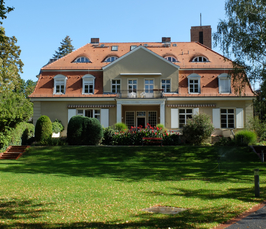Quantum-Chemical Methods for Large Systems: Low-, Linear-, and Sublinear-Scaling Methods
- TH Department Online Seminar
- Date: Aug 19, 2022
- Time: 11:00 AM (Local Time Germany)
- Speaker: Prof. Christian Ochsenfeld
- Chair of Theoretical Chemistry, University of Munich (LMU), Germany
- Location: https://zoom.us/j/96434291324?pwd=SmFDT3lZUnZHcU5KVmloWkN0L0VjUT09
- Room: Meeting ID: 964 3429 1324 | Passcode: 487475
- Host: TH Department

In particular, we recently introduced a novel semi-numerical integration scheme that allows
for linear-scaling exchange-type contractions on both CPUs and GPUs leading to
two to three orders of magnitude speedups [1,2] as compared to conventional
integration. This not only accelerates static calculations, but also ab-initio molecular dynamics simulations and the necessary sampling for complex systems.
Furthermore,linear-scaling reformulations for computing electron-correlation effects via
RPA (random-phase approximation) and beyond RPA methods are described that employ
atomic orbitals and Cholesky-decomposed densities (e.g., Ref. [3]). Finally, reformulations
for computing molecular response properties such as g-tensors and NMR chemical
shieldings are discussed and linear- and sublinear-scaling reformulations open up
new possibilities for bridging theory and experiment.
[1] H. Laqua, T. H. Thompson, J. Kussmann, C. Ochsenfeld; JCTC 16, 1456 (2020).
[2] H. Laqua, J. Kussmann, C. Ochsenfeld; JCP 154, 214116 (2021).
[3] V. Drontschenko, D. Graf, H. Laqua, C. Ochsenfeld; JCTC 17, 5623 (2021).